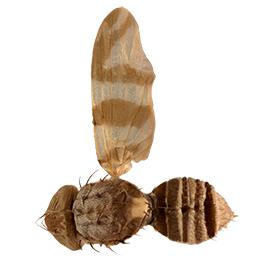Diagnosis
Morphological – adult
Overall body colour predominantly black with yellow scutellum. Abdomen with pale/white transverse bands. Rhagoletis species are diagnosed primarily on wing patterns.
The wing of R. indifferens possesses a broad singular dark fuscous band from anterior margin to hind margin in centre of wing, an inverted ‘U’-shaped dark fuscous pattern across apex and a dark fuscous spot across apex of R4+5.
Note that this species is highly similarly in appearance to R. cingulata (refer to similar species for differences).
Morphological – larvae
Information not available.
Molecular
DNA barcoding
BOLD reference data not available.
PCR-RFLP Test 1
BsrI: Data not available
HinfI: Data not available
HhaI: Data not available
Sau3AI: Data not available
SnaBI: Data not available
SspI: Data not available
Vspl: Data not available
PCR-RFLP Test 2
Data not available.
Gallery
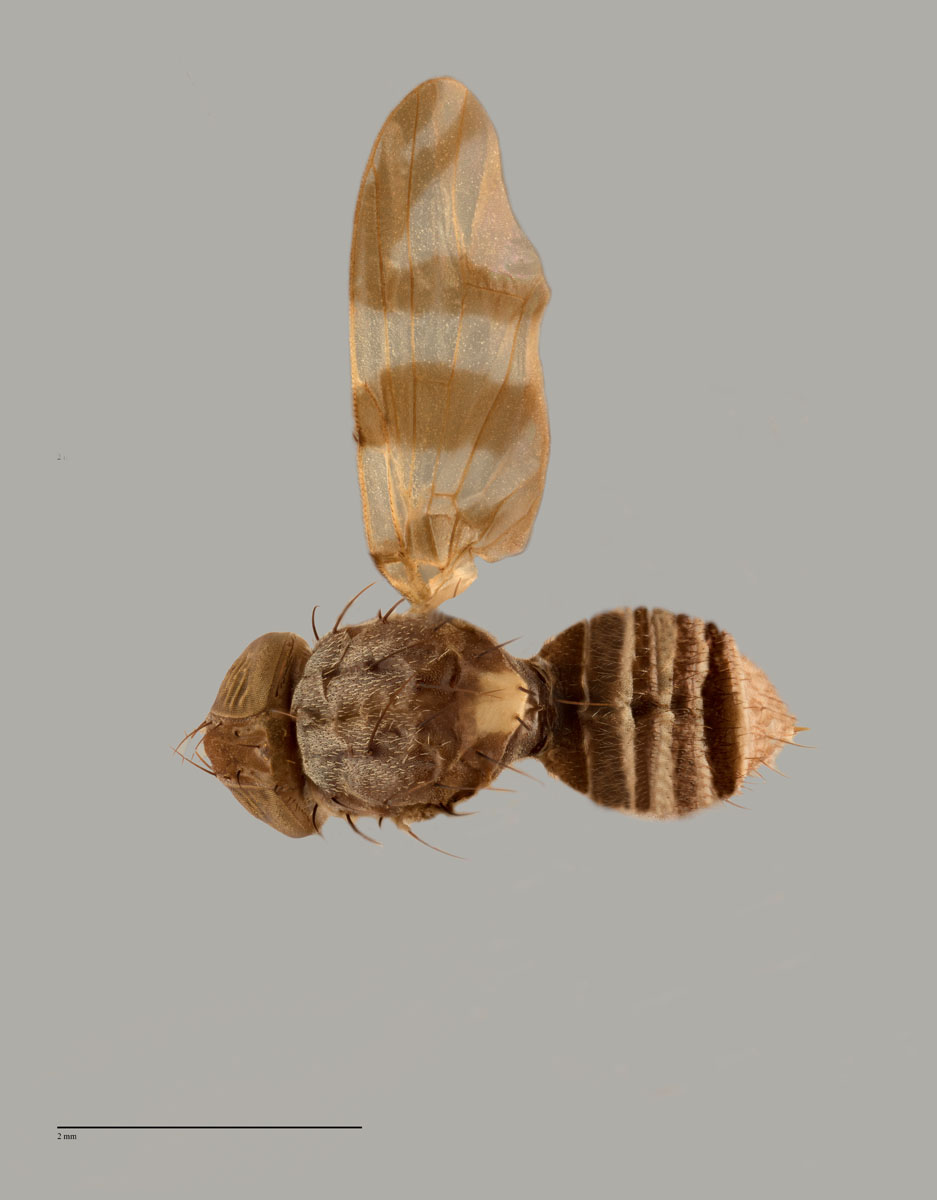 link
linkRhagoletis indifferens - Entire Body Dorsal Classic
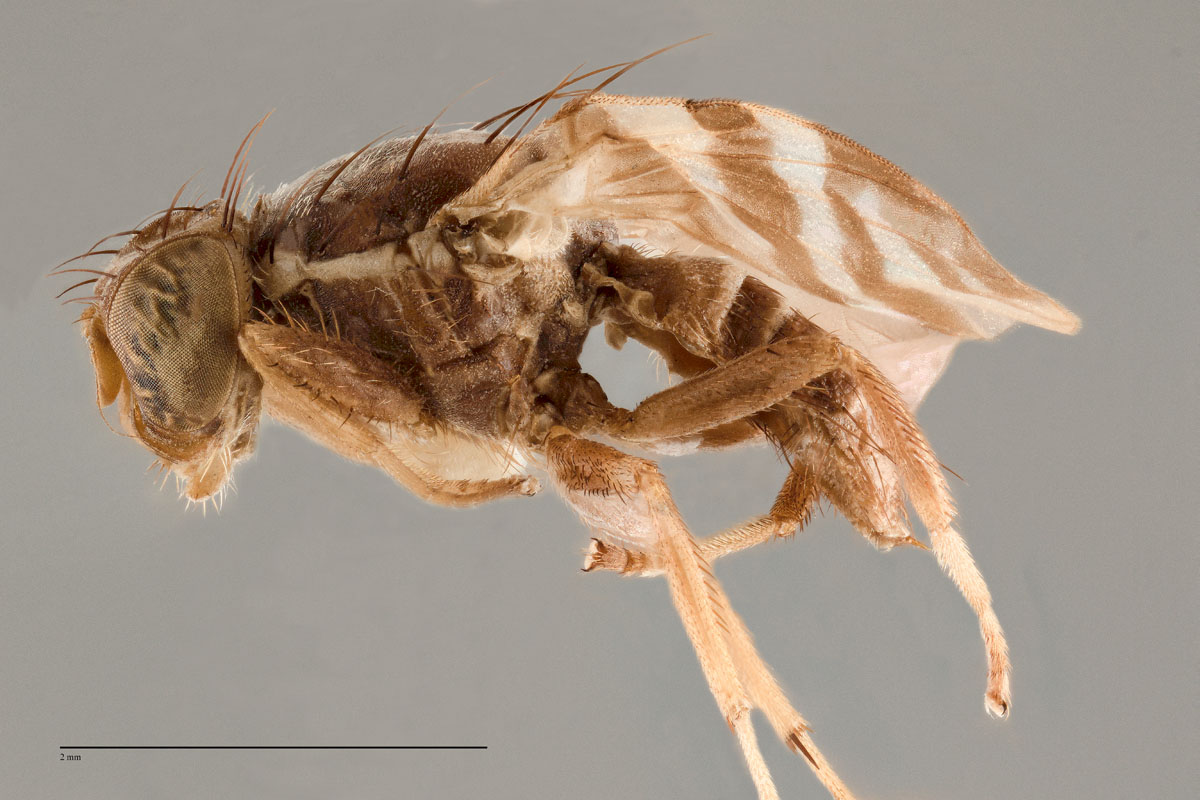 link
linkRhagoletis indifferens - Entire Body lateral Classic IND001
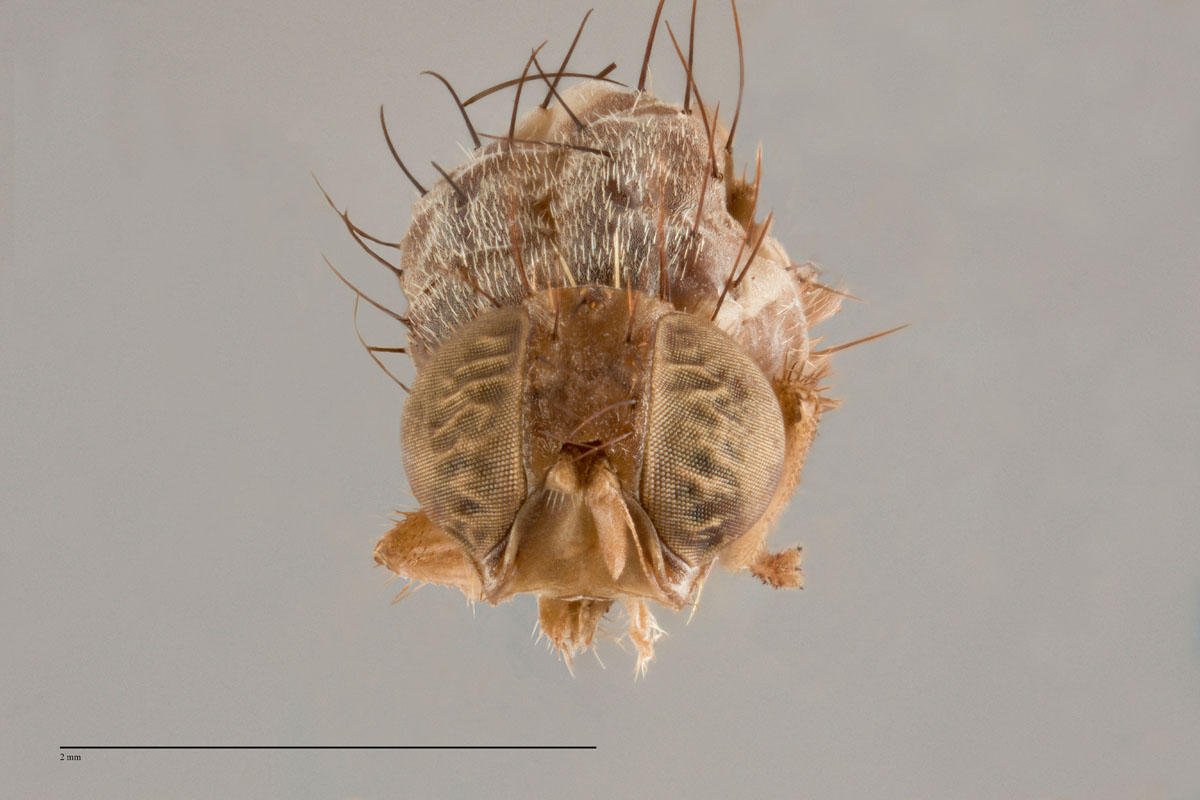 link
linkRhagoletis indifferens - Head Classic IND001
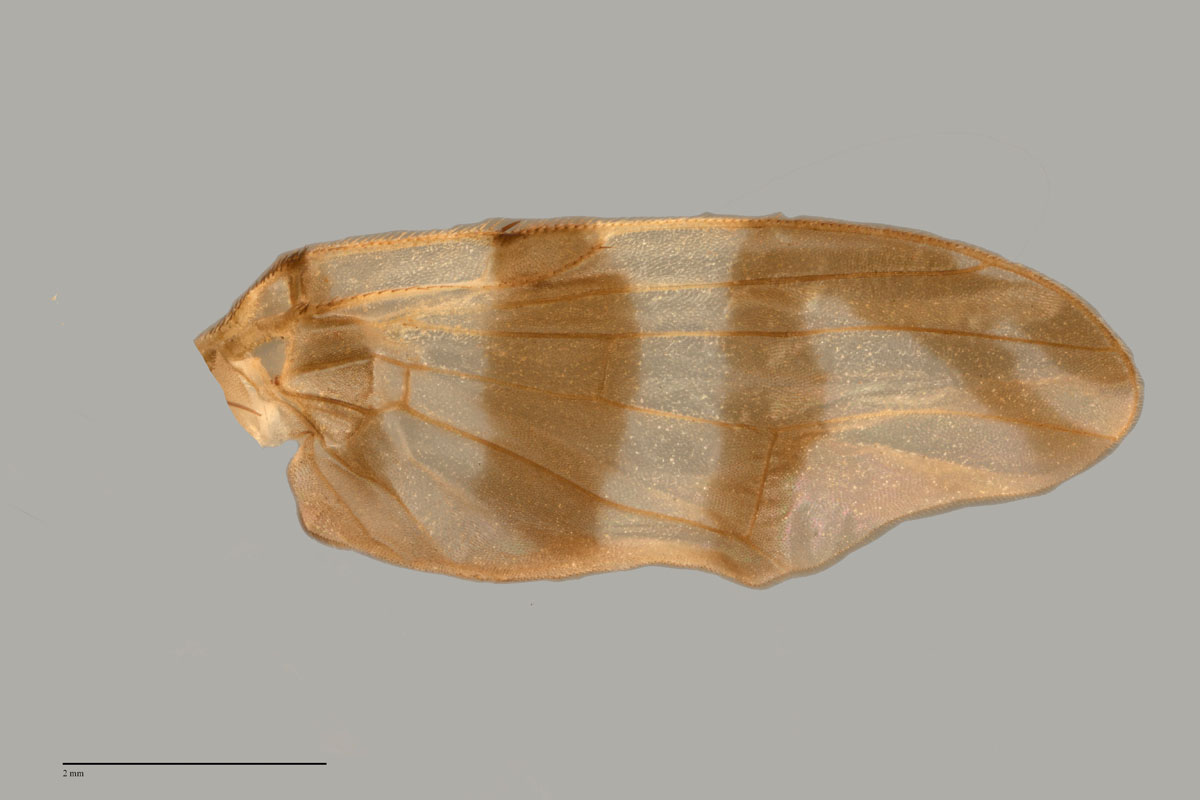 link
linkRhagoletis indifferens - Wing Classic IND001
Host Range
Rhagoletis indifferens has been recorded on hosts from the Rosaceae family (for a full list of recorded hosts see CABI 2007).
Major commercial hosts:
- Prunus avium (sweet cherry)
Distribution
Rhagoletis indifferens is a western North American species (Canada and USA).
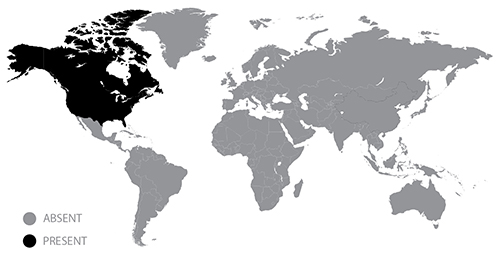
Similar species
Rhagoletis indifferens is similar to R. cingulata in wing pattern but the anterior arm of R. indifferens is broken to produce an apical spot in only about 5% of individuals in contrast to R. cingulata, in which this spot is much more commonly encountered. In addition, other characters that distinguish R. indifferens from R. cingulata are as follows:
Rhagoletis indifferens:
- Apical yellow shading on posterior margin of tergite 5 of male lacking.
- Black shading always present on posterior surface of fore coxa
- Epandrium dark-coloured
Rhagoletis cingulata:
- Apical yellow shading on posterior margin of tergite 5 of male present
- Fore coxae concolorous yellow
- Epandrium light-coloured
Most individuals of R. indifferens may be distinguished from those of R. chionanthi and R. osmanthi by the differences in geographical distribution and hosts and by the generally smaller size and lesser development of the wing bands (Foote et al. 1993).
Additional information:
Rhagoletis indifferens may not be a distinct species but a colour variety of Rhagoletis cingulata. It is distributed primarily over western regions of mainland USA where it infests wild and cultivated cherries of the plant genus Prunus (pers. comm. Drew 2010).
Pest Status
- Exotic
- Rhagoletis indifferens is an important pest of cherries in North America
Attractant/Lure
No known record, but can be captured in traps emitting ammonia.
